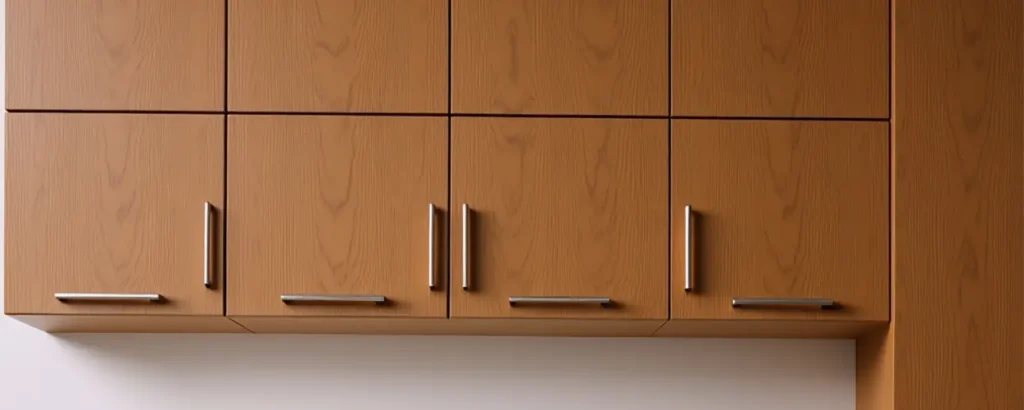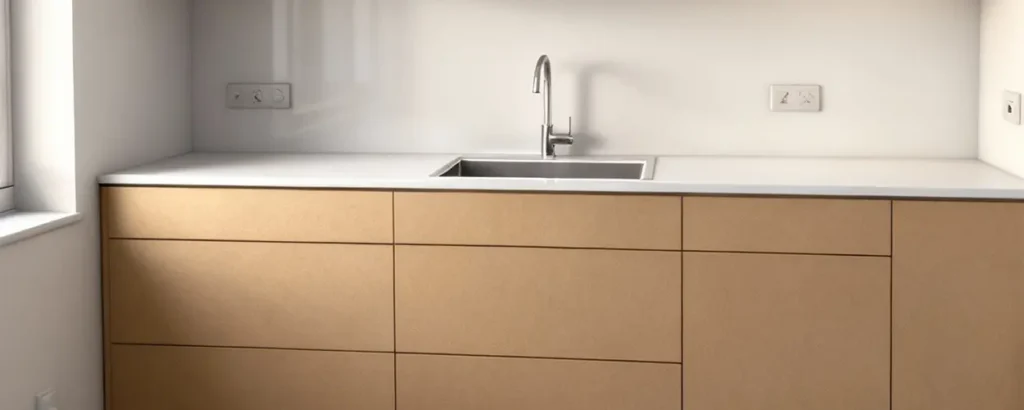Tired of furniture that warps, cracks, or looks uneven? You’re not alone. Many DIY enthusiasts and furniture makers turn to Medium Density Fiberboard (MDF) for its smooth surface, affordability, and versatility. This guide dives deep into the best practices for using MDF to create stunning, durable furniture pieces that last. We’ll cover everything from selecting the right type of MDF and essential sealing techniques to expert priming and finishing tips. Whether you’re building a sleek modern cabinet or a sturdy bookshelf, learn how to avoid common pitfalls like swelling, orange peel texture, or bubbling, and unlock the full potential of MDF for your next project.
Why Choose MDF for Your Furniture Projects?
MDF, or Medium Density Fiberboard, is an engineered wood product made by breaking down hardwood or softwood residuals into wood fibers, combining them with wax and a resin binder, and forming panels under high temperature and pressure. Its uniform composition and smooth surface make it an ideal candidate for furniture projects that require a flawless finish, whether you’re painting, laminating, or applying veneers. Unlike natural wood, MDF has no grain, which means it won’t split or crack easily, and it provides consistent strength across the entire sheet. This makes it exceptionally versatile for creating everything from intricate decorative pieces to robust shelving units.
The eco-friendly nature of modern MDF is another significant advantage. Many manufacturers now use recycled wood fibers and employ environmentally friendly manufacturing processes, with some boards containing up to 95% recycled materials. Furthermore, the industry is shifting towards low-emission and no-added-formaldehyde (NAF) formulations to meet strict indoor air quality standards like CARB Phase 2. This focus on sustainability means you can choose a material that minimizes environmental impact without sacrificing performance. For furniture makers, this translates into a product that is not only easier to work with but also aligns with the growing consumer demand for sustainable home goods.
However, it’s crucial to understand MDF’s limitations. Its primary weakness is moisture; unless specially treated, standard MDF can swell when exposed to water. This is why it’s essential to use the correct type of MDF for your specific application and to seal it properly. Despite this, its benefits are compelling: cost-effectiveness, exceptional stability (it won’t warp or shrink like natural wood), and ease of machining allowing for clean cuts and detailed designs. For painters, MDF is a dream canvas, as its smooth surface accepts paint beautifully, often yielding a superior finish compared to knotty pine or other natural woods.

Understanding Different Types of MDF for Various Applications
Not all MDF is created equal. Selecting the right type is the foundational step to ensuring your furniture’s durability and functionality. The most common variant is Standard MDF, which is widely used for furniture, cabinetry, and interior decor elements like wall panels and trim work. Its popularity stems from its low cost and ease of use, making it a favorite for projects intended for dry environments. However, for any piece that might encounter humidity—think kitchen cabinets or bathroom vanities—standard MDF is a risky choice without extensive sealing.
For environments where moisture is a concern, Moisture-Resistant (MR) MDF is the superior choice. This type is engineered with additives or different resins that give it enhanced protection against swelling and degradation caused by humidity. It’s specifically designed for use in areas like kitchens and bathrooms, where the demand for durable, water-resistant materials is high. Using moisture-resistant MDF significantly reduces the risk of damage and extends the life of your furniture pieces in challenging conditions.
For commercial settings or spaces with strict fire safety regulations, Fire-Retardant MDF is available. This type undergoes treatment with flame-resistant chemicals, making it less susceptible to ignition. It’s commonly specified for schools, hospitals, and public buildings where meeting safety codes is paramount. When planning your project, always consider the end-use environment. Tip: Always check the manufacturer’s specifications for the MDF’s density and intended application. Higher density boards are generally more durable and better suited for furniture that will bear weight or experience frequent use.
The Non-Negotiable Step: Proper Sealing of MDF
The single most important practice for creating durable MDF furniture is proper sealing. Since MDF is highly porous and susceptible to moisture absorption, a reliable sealant acts as a protective barrier, preventing swelling and ensuring the longevity of your piece. The sealing process, often the first coating application, fills surface imperfections and ensures a closed surface, creating a uniform base for subsequent primers and topcoats. Neglecting this step, or doing it poorly, can lead to a host of problems down the line, including warping, paint failure, and a compromised structure.
To achieve a perfect seal, technology and technique matter. For manual applications, using a spray gun like the XCITE™ Light Airmix® Manual Spray Gun equipped with an Airmix® nozzle is recommended. For automated processes, the AVX Automatic Airmix® Spray Gun is ideal. The Airmix® technology is particularly effective because it uses a combination of low pressure and a small amount of air (around 0.5 bar) to achieve optimal transfer efficiency. This method prevents “de-solventization,” where the solvent evaporates too quickly, which can lead to a flawed finish and issues like orange peel texture. Pro Tip: Always seal the edges of MDF, as they are significantly more porous than the faces. You may need to apply multiple coats to the edges to achieve a perfectly smooth base.
Priming and Painting: Achieving a Flawless Finish
After sealing, priming is the next critical step. A high-quality primer creates a strong, uniform foundation for your paint or topcoat, enhancing adhesion and ensuring a consistent, professional-looking finish. For MDF, it’s crucial to use a primer designed to lock in any remaining tannins and provide a solid base. When applying primer, avoid introducing excess air during spraying, as this can trap air within the film, leading to pesky bubbling issues.
To prevent bubbling when priming, airless spray technology is often the best solution. For manual work, consider using an SFLOW™ 275 & 450 Airless® Manual Spray Gun with a Skill tip. For automated applications, the ASI Airless® Automatic Spray Gun with a Skill tip is recommended. This technology operates at lower pressure compared to classic airless applications, which helps avoid the creation of bubbles in the film and results in a superior finish. Once the primer is applied and has fully dried, lightly sand the surface with fine-grit sandpaper (e.g., 220-grit) to remove any minor imperfections and achieve a glass-smooth surface ready for painting.
When it’s time for the topcoat (whether using UV or non-UV products), achieving a smooth, glossy finish without orange peel texture is the goal. Again, Airmix® technology is highly recommended for this stage. The low speed of the paint particles and the minimal air pressure help maintain the maximum solvent on the particles until they reach the substrate. This allows the solvents to work effectively, helping the paint to level out smoothly for a glossy and even finish. Multiple thin coats are always better than one thick coat. Allow each coat to dry thoroughly according to the manufacturer’s instructions before applying the next.
Caring for Your MDF Furniture
Once your MDF furniture piece is complete, proper care and maintenance will ensure it stays beautiful for years. Although modern MDF, especially moisture-resistant types, are more durable, it’s still wise to wipe up spills promptly to prevent any potential moisture from seeping into unprotected areas. Avoid placing MDF furniture in areas of direct and prolonged water exposure.
For cleaning, use a soft, damp cloth with a mild soap solution. Avoid abrasive cleaners or scouring pads, which can damage the painted or laminated surface. With its smooth surface, MDF is generally resistant to staining and fading, making it a practical choice for busy households. Unlike solid wood, high-quality MDF furniture won’t warp, rot, or splinter over time, ensuring your creative investment remains in excellent condition for the long haul.

Design and Construction Tips for Long-Lasting MDF Furniture
Building sturdy furniture with MDF requires thoughtful design and construction techniques that account for the material’s properties. While MDF is dense and uniform, it is not as strong as solid wood in terms of load-bearing capacity, especially over long spans. Therefore, when designing shelves or tabletops, ensure adequate support. This can be achieved by using thicker MDF panels (e.g., 25mm for shelves), incorporating supportive structures like braces or dados, or designing with reinforced edges.
The edges of MDF present both a challenge and an opportunity. While cut edges are porous, they can be beautifully finished. Techniques for finishing edges include:
- Applying multiple coats of sealant and primer, sanding between coats.
- Using iron-on edge banding (available in wood veneer or PVC) for a quick, clean look.
- Creating a built-up edge by gluing on a solid wood strip or a layer of MDF to create a durable and paintable edge.
- Routing a decorative profile on the edge, which can then be sealed and painted seamlessly with the rest of the piece.
For joinery, simple butt joints reinforced with glue and screws (using pilot holes) are common. For greater strength, consider using dowel joints, pocket-hole joinery, or incorporating plywood or solid wood frames within the MDF construction. Remember that MDF holds screws well in the face but has less holding power on the edges. Always use a sharp, carbide-tipped blade when cutting MDF to minimize sanding later and prevent tear-out. Research indicates that the roughness of cut MDF edges can increase over time after cutting, so finishing edges promptly after cutting is advisable for the best results.

